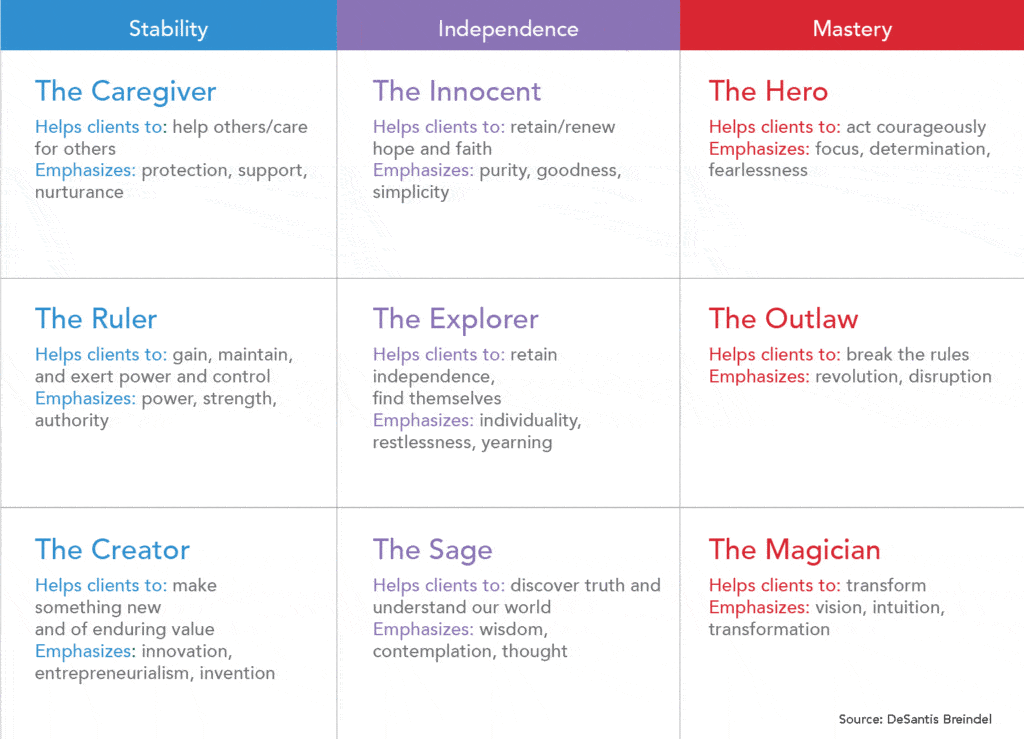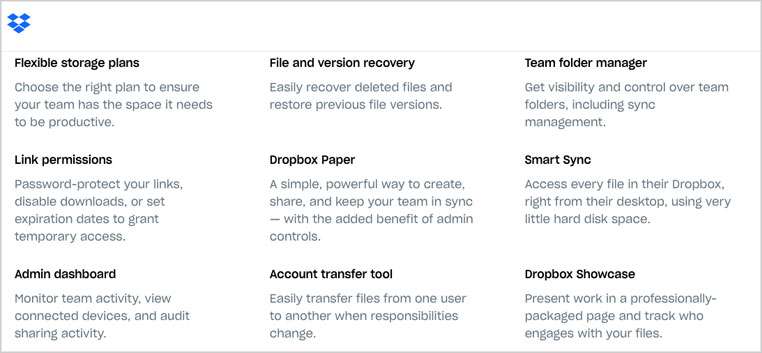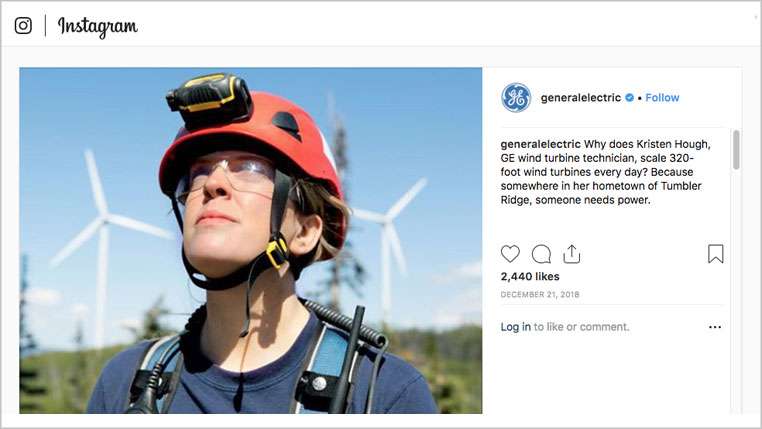Subscribe to Our Newsletter
The B2B marketplace—known for its complex products and services and long, specs-heavy business development cycles—overflows with content. B2B brands often lean into the depth and excellence of what they do to beat their competitors, focusing on getting the granular details right. There’s another way to stand apart, however. And in the hyper-competitive world of B2B, we never want our clients to underestimate the power of a compelling brand voice.
A B2B brand voice is the unique writing style and tone a B2B company uses to communicate—whether to attract prospects, keep customers engaged, build investor confidence or inspire employees. It’s just one part of the B2B brand personality (also expressed through design, UX, etc.). But it plays an enormous role in differentiating a brand, making it consistently recognizable and memorable.
While there are many fundamental differences between B2B and B2C realms, B2C marketing leaders have focused on voice as an essential brand-building tool for a very long time. Borrowing voice-specific brand strategies can be a B2B game changer.
Why B2C Strategies Can Help Shape an Effective B2B Brand Voice
In the past, B2B and B2C marketing existed on opposite ends of a spectrum. Where B2C communications were casual and colloquial, B2B materials were formal and professional. Where B2C ads built a friendly rapport with their customers, B2B campaigns often adopted a more serious tone.
Today, expectations across B2B and B2C brand relationships can influence certain facets of B2B branding. After all, B2B clients are consumers, too. They’ve experienced the speed of Amazon, the convenience of Uber and the personalization of Netflix. Their journey to purchase in the B2B marketplace may be longer and involve far more internal/external information-sharing and discussion. But buyers can’t help but compare these experiences, consciously or subconsciously.
For B2B brands, the solution isn’t to cast off B2B marketing and try to replicate B2C promises or messaging. We’ve written about all the reasons the B2C playbook won’t always apply in the B2B world. B2B brand voice, however, represents a vital exception.
The Importance of a Strong B2B Brand Voice
Many factors shape the B2B brand experience, but consider voice near the top of that list.
How a brand speaks to audiences makes a strong impression and sets the stage for all future interactions. People who encounter a persuasive, approachable B2B brand voice can feel instinctively understood and even experience a sense of belonging. Formal, details-laden messaging from competitors who haven’t modernized their voices can feel cold and impersonal by contrast.
So for B2B brands, transitioning away from a more traditional writing style isn’t just smart, it’s imperative. Even when it’s hard.
As they work to evolve their voices, B2B companies will still need to maintain a higher level of professionalism so clients can feel confident partnering with them on high-value, high-stakes deals. Many B2B enterprises are also limited in the language they can use. Some operate in highly regulated industries, their communications subject to legal restrictions. Others may produce exceptionally technical products and struggle to speak simply about such complex offerings.
With all of those challenges to consider, how can B2B companies adopt a differentiating, accessible brand voice that still feels true to their businesses? Here are our top tips for transforming a B2B brand voice from cold to compelling.
How to Build a Better B2B Brand Voice
1. Prioritize Personality
Like people, every brand—B2B and B2C—has a personality. The first step is to find yours.
In workshops with our clients, we use Jungian archetypes to help them identify their business’s unique brand personalities. These personality models (Magician, Caregiver, Explorer, etc.) define universal characters that live within our collective subconscious. We all recognize these archetypes and associate values or ideas with them—without even thinking about it.

Someone who is bold and relentless (a Hero) would never express themselves the same way a nurturing Caregiver would. The same applies to two businesses with different personalities.
For a business with a Hero personality, for example, a “Contact Us” call-to-action might read: “Questions? We’re ready with answers.” The message is direct, confident and conveys authority to readers. A business with a Caregiver personality might take on a warmer, more conversational tone, writing, “Reach out to us. We’re here to help.”
Though both of these messages encourage readers to get in touch, personality clearly plays a role in shaping what language they choose and how their tone invites readers to perceive them. These messages feel noticeably different from each other because personality leads.
2. Limit Buzz-speak (aka Jargon)
B2B businesses have to convey deep expertise to clients, prospects and/or investors. But peppering your writing with industry jargon and high-level vocabulary isn’t the only way to do it. Sometimes, more casual language can actually help critical concepts stand out. It can make your expertise seem effortless.
Stories and proof points also communicate business strengths. For example, you might highlight a time when you solved a client’s problem or elevate the people who are subject matter experts within your organization. Doing so can often reinforce the value of your experience more effectively than a fact sheet littered with business- or tech- speak.
That said, jargon is sometimes unavoidable. Audiences may even expect to hear or see certain words in your shared B2B content.
In these moments, strike a balance. For example, a business insurance company needs to explain its liability insurance by using words like, well, “liability.” But they can also expand their language beyond that term, introducing words like “accident” or phrases like “issues you face when things go wrong.” Include the words your audiences need to see to feel confident in your capabilities, but when you can, swap out technical or lofty words for everyday phrases.
It sounds counterintuitive, but writing accessible content is one of the best ways to sound smart.
3. Modulate Across Mediums
Any strong B2B brand voice must be built with some flexibility in mind. Different types of B2B communications may vary in their tone—from informational to expressive, from educational to inspirational. Materials like press releases, fact sheets and white papers, for example, should sound more technical than social media posts and advertisements.
Consider the web conferencing company GoTo Meeting. On a more serious platform like their website, GoTo Meeting’s content is simple and straightforward. But when it comes to their X and Instagram accounts, the brand lets loose a little bit—creating humorous, topical posts that highlight the importance of communication in ways that are more appropriate to those platforms.
Consider each individual context and how users engage there. By recognizing where your specific B2B messaging must fall on the scale of professional to personable, you can leverage the right variation of your brand voice to make a strong connection.
If this recommendation sounds tricky, we understand. An agency partner that specializes in B2B branding can provide you with the clear guidelines to adapt your voice across channels without ever sacrificing what sets you apart.
4. Say Just Enough
To stay relevant in the digital age, B2B companies are publishing an ever-increasing number of articles and think pieces, blog posts and ads. Inundated with this content from left and right, readers have become content skimmers. That means less is often more.
Condense your writing to spotlight the most important information. Break up longer paragraphs and add punchy, informative subheads to separate chunks of your argument. When possible, use bullets and lists to make text easier to scan.
Dropbox Business does this well. With a web page dedicated exclusively to plan features, Dropbox uses short, to-the-point headers followed by one-sentence synopses to tell its audiences everything they need to know. There are no unnecessary words.

5. Write Rhythmically
A flat, monotone voice will make your audiences lose interest quickly. Depending on your brand’s personality, find ways to create rhythms that are uniquely yours.
How do some B2B companies keep readers engaged? By posing questions. Questions put your audience’s needs at the center of your message and help the brand pivot seamlessly from one idea to the next.
You can also add pace and dynamism to your writing by mixing short, simple sentences (and even parentheticals) with longer, more complex ideas. Don’t be afraid to break grammar rules. Start sentences with conjunctions. Fragments, too. (See what we did there?)
Basecamp, a web application company, uses both tactics on their homepage—which brings bite-size sentences, lists and even a call-and-response setup together, all in one paragraph. This cadence not only feels natural but also keeps Basecamp’s audience intrigued.
Experiment with these tactics and others (everyone needn’t sound like Basecamp). Once your brand finds its rhythm, it can help make your brand voice unmistakable.
6. Embrace Storytelling
Narratives help people understand all the connections you want them to draw from the information you share. Whether they’re real customer success stories, hypothetical scenarios or compelling context that clarifies the stakes of important business decisions, stories hook readers from the get-go. They’re also 22 times more memorable than facts and figures alone.
Take General Electric. This innovative brand incorporates storytelling across mediums, including social channels. In one Instagram post, GE published this compelling caption about a wind turbine technician: “Why does Kristen Hough, GE wind turbine technician, scale 320-foot wind turbines every day? Because somewhere in her hometown of Tumbler Ridge, someone needs power.” Readers are immediately drawn in by this employee’s sense of mission combined with a true-to-life image of her at work.

More Examples of Strong B2B Brand Voices
For more inspiration, explore these B2B businesses and their masterful brand voices:
- Slack: As a company that facilitates communication across other businesses’ employees and teams, it’s no wonder that Slack created a memorable voice for itself. Plainspoken copy, a relatable Twitter feed and personable loading messages ensure that when Slack speaks, businesses—and the people behind them—listen.
- Salesforce: Clear, honest, inspiring and fun, the Salesforce voice is undeniably different. This CRM platform published their brand writing guide online, making it accessible to the public. And every day, it puts those guidelines into practice—keeping clients at the center of all their communications, featuring real success stories and always leading with everyday language.
- HubSpot: HubSpot’s software is designed to improve its customers’ inbound marketing and sales. So it makes sense that the company developed its own strong, active brand voice to market and sell itself. With short, clear sentences that start with conjunctions like “and,” “but” and “because,” Hubspot is a champion of conversational copy. With simple website categories and compelling calls to action, the brand keeps readers hooked—whether they’re reading a product page, a blog post or a job listing.
Brand voice is simply too powerful a tool for B2B companies to leave on the table. By studying best practices from the B2C world—and implementing them selectively and strategically—B2B brands can ensure that even their most complex offerings stand apart as the relatable, intuitive choice for customers.
It’s simple, but it’s true: What you say is profoundly shaped by how you say it.
To learn more about enhancing your B2B brand voice, contact us.
Original published February 19, 2020.



